Passphrase examples and how they work

Tired of juggling a million impossible-to-remember passwords? You’re not the only one. The good news? There’s a better way. Passphrases make staying secure way less painful and a lot easier to remember.
We’re going to explain what passphrases are, why they’re more secure than you’d think, and how you can start using them without making your life harder. Ready to ditch the password frustration? Let’s get into it.
What is a passphrase?
A passphrase is like an upgraded password: longer, easier to remember, and often more secure. Instead of relying on short, messy combinations of letters and symbols, it uses multiple words in a more natural, memorable way to keep your accounts safe.
Typically, a passphrase has four or more words chosen to be unpredictable but still easy for you to remember. Common formats include:
- Words separated by spaces
- Mixed in symbols or numbers
- Camel case (capitalizing each word without spaces)
- Punctuation or separators like dashes
Real-world passphrase examples
A strong passphrase doesn’t need to be overly complicated. It just needs to be long, unpredictable, and something only you would think to use. Avoid common phrases, famous quotes, or anything too obvious. Instead, combine unrelated words or add your own twist with symbols or numbers.
Here are a few illustrative examples:
| Example passphrase | Description |
| red elephant coffee volcano | Four random, unrelated words |
| DrinkWater$HealthyStay@2025 | Personalized phrase with symbols and numbers |
| NeverTrustHungryHuskies | Quirky camel case sentence |
| Gaming-Chips-Fun-Evening | An easy-to-read passphrase, separated by dashes |
Note: The examples here are for demonstration only. Be sure to create your own unique passphrase.
Passphrase vs. password: What’s the difference?
Passwords and passphrases both protect your accounts, but they work in different ways and offer different levels of security.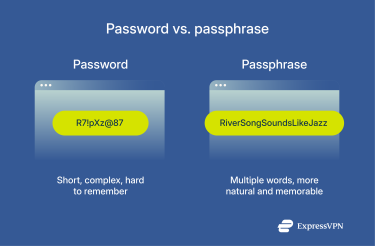
Creation
Passphrases are simpler to create because you can use real words or phrases you can easily picture. You still want unpredictability, but it's easier to get creative without making it impossible to remember.
- Password: Usually 8–16 characters with a mix of letters, numbers, and symbols.
- Passphrase: Typically 4 or more words, possibly with punctuation or numbers.
Security
One of the biggest advantages of passphrases is that their length increases entropy (the measure of unpredictability or possible combinations), making them much harder to crack, even when using simple words. More characters mean more possible combinations, which slows down dictionary or brute-force attacks.
This is why cybersecurity experts, including National Institute of Standards and Technology (NIST), emphasize length for better protection and allow passphrases because they’re easier to remember while providing strong security. The Electronic Frontier Foundation (EFF) also points out that combining several random words creates far more possible combinations, making passphrases both easier to remember and harder for computers to guess.
Ease of use
Passphrases are generally easier to remember and type because they follow natural language patterns. Complex passwords can be frustrating to memorize and easy to forget without a good password manager.
How to create a strong passphrase: 7 tips
Creating a strong passphrase is all about balancing security with ease of use. These tips will help you get it right:
1. Use long passphrases
Length is your best defense. Aim for at least 16 characters (20 or more is even better). A few extra words can go a long way in boosting security.
2. Avoid personal information
Pick words that don’t relate to your personal life. Avoid using names, birthdays, addresses, or pop-culture references that could be easily guessed. The more unrelated and unexpected your words are, the stronger your passphrase will be.
3. Don’t reuse passphrases
Always use a different passphrase for each account. Reusing them makes all your accounts vulnerable if one gets breached. Keeping them unique is one of the simplest ways to limit the damage from leaks.
4. Make it memorable
Your passphrase should be easy for you to remember without writing it down. Try vivid imagery or word combinations that make sense only to you. Something like “ClocksSwimInVanillaRain” sounds strange but forms a clear picture in your mind, making it easier to recall.
5. Mix in cases and symbols
Many sites require symbols or mixed-case letters. You can add these without making the passphrase unreadable. For example, “Thin!Lions_RunQuickly” is still easy to type and remember while meeting complexity requirements.
6. Store your passphrases securely
Even if you choose passphrases that are easy for you to remember, it can be tough to keep track of them all, especially if you’re using a unique one for every account. That’s where a trusted password manager like ExpressVPN Keys comes in.
It safely stores all your passphrases in one encrypted place, so you don’t have to rely on memory alone or write them down somewhere risky. It also helps you organize your logins and quickly fill them in when you need them, making everyday use more convenient and secure.
7. Update passphrases periodically
You don’t have to change them constantly, but consider updating them if you suspect a breach, get a security alert, or haven’t changed them in years. Refreshing your passphrases occasionally reduces the window of opportunity for attackers.
Types of passphrases
Not all passphrases are created the same way. How you build yours can affect both its security and how easy it is to remember. Here’s a quick look at the most common types.
Diceware passphrases
A Diceware passphrase is built by picking truly random words from a special Diceware word list. You roll actual dice to choose each word, ensuring the result is unpredictable and free from personal patterns attackers might guess.
- Diceware passphrase example: tooth elbow curtain vapor taxi
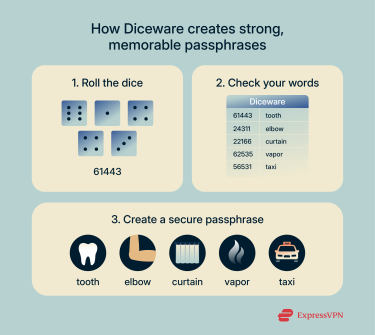 Learn more: For more details, check out our guide on generating secure and memorable passwords with Diceware.
Learn more: For more details, check out our guide on generating secure and memorable passwords with Diceware.
Mnemonic passphrases
Mnemonic passphrases use phrases or sentences you can easily recall. Often, people use the first letter of each word, a line they made up, or something that follows a pattern they’ll remember. Here’s an example:
- Sentence: My dog snores at 3AM every night
- Short form: Mds@3AMen
- Full phrase: MyDogSnoresAt3AMEveryNight
This method boosts memorability but can be less random. Avoid using famous quotes or song lyrics since attackers often check those first.
Hybrid or modified passphrases
Hybrid passphrases mix different techniques: random words, numbers, punctuation, or even a bit of personal logic. They strike a balance between security requirements and ease of use.
- Security phrase example: Blue7-Mango#Drives_Carrot88
These combinations are flexible and work well on sites that demand extra complexity while still being memorable to you.
Measuring passphrase strength
The strength of a passphrase depends on how hard it is to guess, not just for a person, but for a computer that can try billions of combinations. Strong passphrases have three key traits: length, randomness, and uniqueness.
Entropy is a way of measuring this strength. It reflects how unpredictable your passphrase is, and it’s usually expressed in bits. The higher the entropy, the more possible combinations an attacker would have to try, making it much harder to crack.
Think of it like rolling dice: the more dice you roll, the more possible outcomes there are.
For example, something like “Summer2025” has low entropy because it follows an easy-to-guess pattern. In contrast, a passphrase such as “tiger banana cloud wrench slide” has higher entropy thanks to its length and the use of unrelated, random words.
Higher entropy means more combinations to guess and better protection against brute-force attacks.
Benefits of using a passphrase
Passphrases have some clear advantages over traditional passwords that make them worth considering:
- Easier to remember: As we already mentioned, passphrases use full words or phrases, making them more natural to recall than random character strings.
- Harder to crack: Thanks to their length and unpredictability, passphrases have higher entropy, making them tougher for attackers to guess or brute-force.
- Encourages unique passwords: Because they’re easier to remember, you’re less likely to reuse them across accounts, reducing the risk if one site is breached. Learn why unique passwords matter.
- Improves login experience: Typing a phrase feels easier and more natural than dealing with complex symbols and numbers.
Cons of using a passphrase
While passphrases improve security and usability, they do have a few drawbacks to consider:
- Not supported everywhere: Some sites or apps limit password length or disallow spaces and certain characters, which may prevent you from using a full passphrase. In those cases, you might need to adapt or simplify it.
- Longer to type: More words mean more characters to enter, which can be slower, especially if you’re including punctuation or mixed case. This can lead to mistakes when logging in.
- Potential for unsafe storage: If a passphrase is too complex to remember, there’s a risk you might write it down or store it insecurely, undermining its security benefits.
Tip: Use passphrases along with two-factor authentication (2FA) and stay alert for phishing attacks to boost your overall security.
FAQ: Common questions about passphrases
What does a passphrase look like?
A passphrase usually looks like a string of unrelated or meaningful words combined into a long, memorable phrase. Unlike passwords made up of random characters, passphrases are typically easier to read and recall. You can also include punctuation, numbers, or capitalization to meet site requirements while keeping it memorable.
How do I write a secure passphrase?
Start by picking four or more unrelated words to create a long, unpredictable phrase. Use a random word list or generator, avoid personal details, and consider adding symbols or numbers to increase complexity. The key is to focus on length, unpredictability, and making it memorable for you without relying on common phrases or predictable patterns.
What is the best type of passphrase to use?
The best type of passphrase is one made from random, unrelated words. For example, combinations like “lamp rocket breeze canyon” offer high entropy while still being memorable if you imagine a vivid story or image. You can strengthen them further by adding numbers, punctuation, or a personal twist, as long as you avoid predictable patterns or public references.
What is a passphrase order example?
A passphrase order example refers to how you arrange your chosen words to form a memorable but secure phrase. For example, choosing a specific sequence like “cloud tiger banana wrench” creates a unique passphrase that’s harder to guess but easier for you to remember. The particular order you choose helps ensure it's personal and unpredictable.
Are passphrases more secure than passwords?
Passphrases are generally more secure than traditional passwords. Their longer length and use of multiple words make them harder for attackers to guess or crack through brute-force attacks. While a typical password might be short and complex but hard to remember, a good passphrase combines length, unpredictability, and memorability, offering stronger protection without sacrificing usability.
Take the first step to protect yourself online. Try ExpressVPN risk-free.
Get ExpressVPN


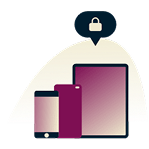
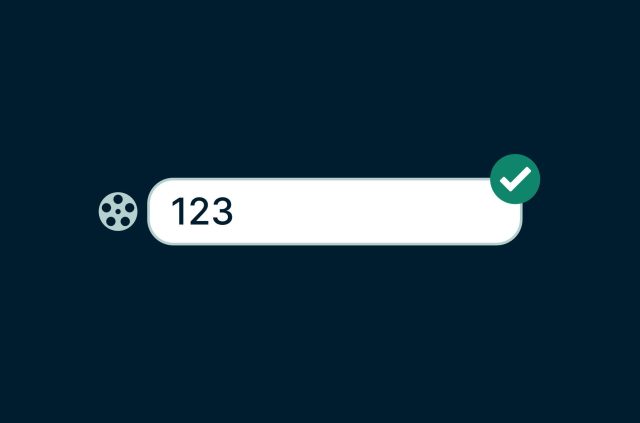
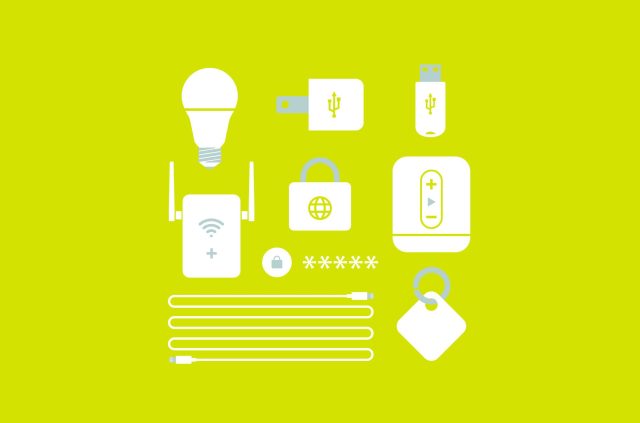
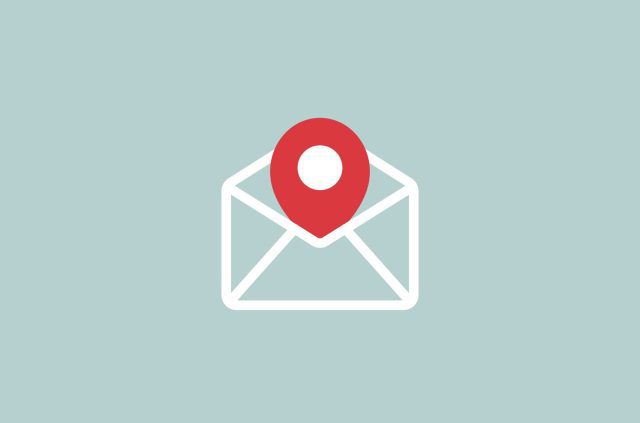
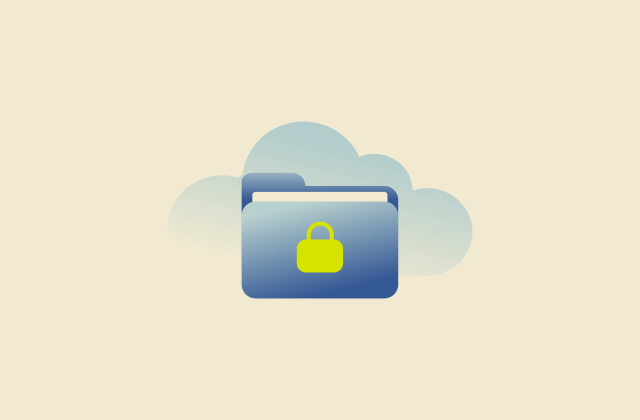

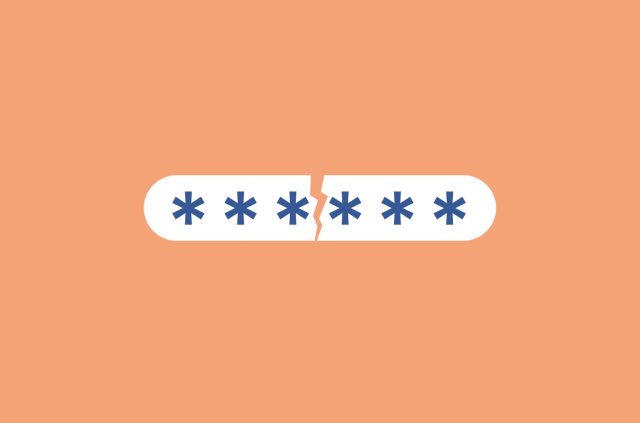

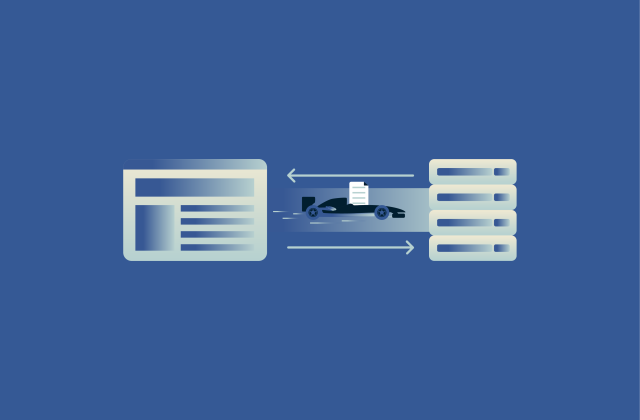


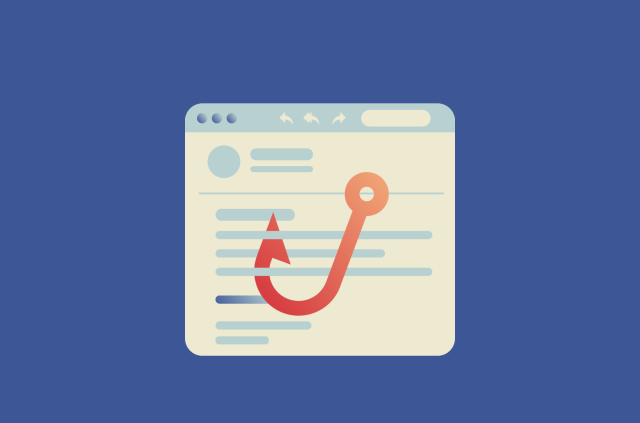

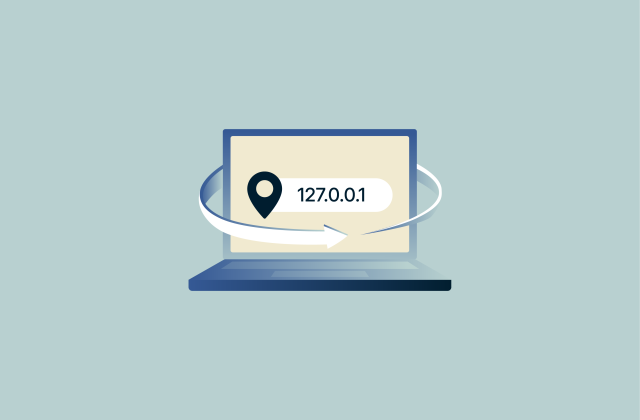
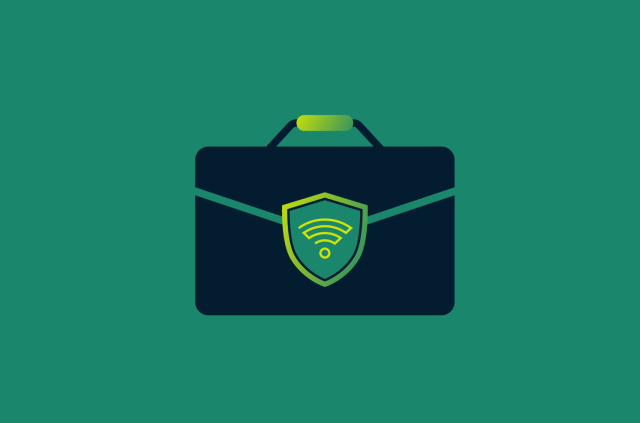




Comments
Is ExpressVPN considering providing support for FIDO/U2F or FIDO2 log-in capability on accounts?
Some password managers support passphrase genenation - good idea to implement this into Keys.
The problem with this article is that it's as if we had only one thing to have a pass/phrase/word for. If you have a few hundred such websites (&c) and a hundred+ passphrases, how are you going to remember which meaningful phrase goes with what? There's no escape -- it's best to have a really good password manager that works across browsers. Before I switched from PC to Mac several years ago I used LastPass but changed to Apple's keychain when I got Macs -- and it works, of course, across desktop, iPhone, iPad. And some sites (not sure now but used to be the case with BT Internet) don't allow gaps -- although you can close the gap with hyphens. You can make e.g. a 20-digit password and split it into 3 groups of 6 plus added '-'s so it looks like an Apple keychain password.